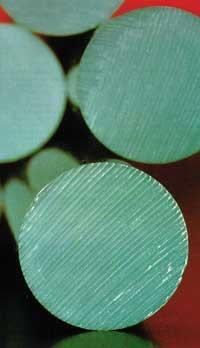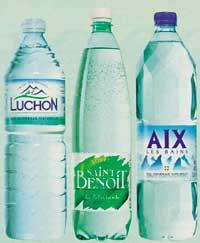PVC: controversy that will not be extinguished for a long time

PVC, or polyvinyl chloride, obtained by polymerization of vinyl chloride (CH2=CHCl), is a plastic material of multiple uses. Its applications are as varied as different: water bottles, containers, food sheets, credit cards, toys, windows, blinds, pens, wire insulation materials, various hospital appliances, auto parts, etc. For its manufacture. Therefore, in today's society it is becoming an indispensable material.
However, PVC is beginning to generate contradictions; many human sectors are criticized for the environmental and health risks that its components can pose. The debate is not new, since the arguments of dangerousness began to be made public for some time from the mouth of environmental groups. The plastic industry has always responded harshly to these arguments, making every effort to prove the opposite thesis. There are many investigations carried out, many of them driven by the plastic industry itself.
In this dance of conclusions and results you can find answers of all kinds that support all kinds of arguments. According to the precautionary principle, they have already chosen to do without the use of PVC, but unfortunately in most countries and states this type of alternative has not been chosen, since governments often bend their heads in the face of industrial pressure.
Controversy over the danger of PVC
The production of this type of plastics is closely related to the industrial use of chlorine. The use of this element generates risks throughout the life of the product. Chlorine is a chemical with high reaction capacity, with important environmental and health problems (diseases, deterioration of the trophic chain and ecosystems, destruction of the ozone layer, ..). Moreover, PVC contains additives that act as plasticizers and stabilizers. Among the first are phthalates, allegedly carcinogenic, while in the second group are heavy metals, cadmium and lead. Studies have shown that these issues have the capacity to migrate from plastic to food, drink and, in general, to the environment.
It is believed that this risk is even higher as the temperature increases and the internal issue is fat. The most prominent case is that of fine PVC foil used to heat food in microwave ovens, as PVC supporters also recognize migration. As for rigid plastics (water bottles), however, there is no agreement on this issue. Recently a similar phenomenon has been published in PVC toys that can dull children. Specifically, Greenpeace has carried out an intense campaign in this area, so some countries, even in Spain, have decided to withdraw products of this type from their market.
Uncontrolled PVC combustion produces hydrochloric acid, dioxins and highly toxic organochlorine substances. Therefore, any structure built with this material can be very toxic if hit by a fire. Just think of the most frequent fires that occur in homes and buildings to realize the danger. Numerous studies have been carried out demonstrating the emission of dioxins and chlorine derivatives in fires in buildings and facilities. We must also take into account the risks generated by PVC in landfills, as they produce uncontrollable emissions of organochlorine compounds as a result of local processes.
Corrupt report of the Committee of Experts

Faced with the controversy of the issue and before deciding which line, the Spanish government decided to create a committee of experts to analyze the problem. The Commission was made up of representatives of different ministries, industries and scientific councils, joined by representatives of trade union and environmental groups. As a result of the work carried out, the commission produced a report that did not reach the consensus of some social groups.
Although this report recognizes few problems with PVC, it has not yet received its final approval, as this puts the government in the dungeon of legal decision-making, something that is not easy to have after the violent plastic industry. According to the report, there is no reason to rule out PVC if the necessary handling conditions are met in its production, use and disposal. However, the landfill recognizes that this is an inadequate disposal route, as it allows the release of hazardous substances in place, so it recommends that landfills be the last option. These results, logically, have given rise to an immediate response and opposition in social groups that consider PVC harmful. It seems that the commission has not taken into account in any case the research papers presented by environmentalists as evidence of injury.
The Spanish government, despising the principle of precariousness, is willing to bow to economic interests. It is clear that environmentalists will have to continue campaigning against and that the controversy will persist. Finally, and as always, the consumer will be responsible for the choice.
Buletina
Bidali zure helbide elektronikoa eta jaso asteroko buletina zure sarrera-ontzian











